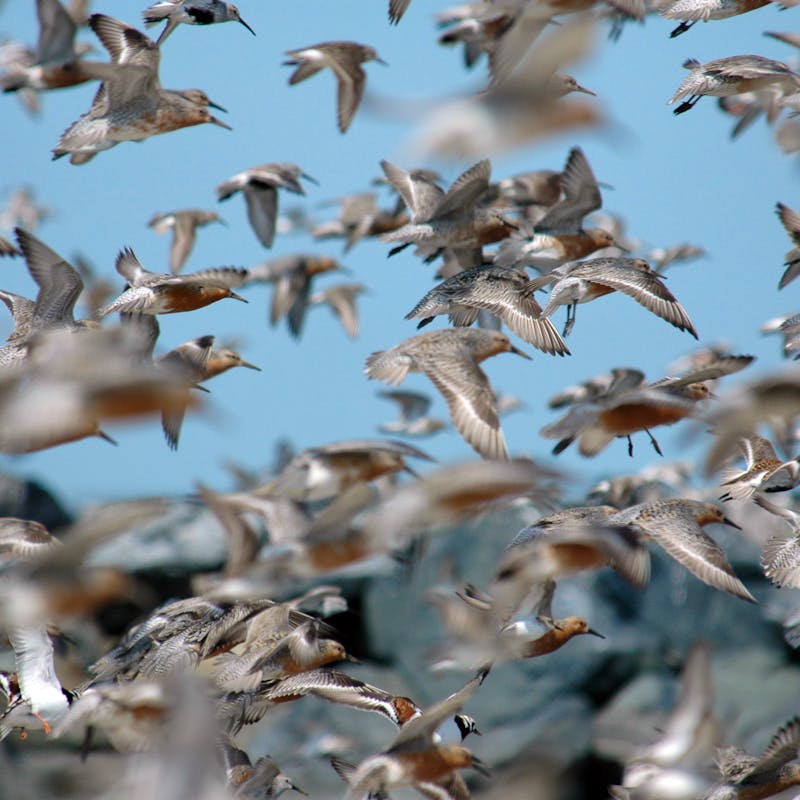Development is one of the most pressing threats to wildlife conservation and biodiversity. The ability of people and wildlife to coexist is regularly challenged in urban areas where interactions between the two grow. More often, wildlife is harmed or forced out of their natural habitat. Unfortunately, in the U.S. and around the world, the presence of wildlife in urban areas is often seen as a nuisance, pest or threat to human health and safety. To preserve our natural world, we need innovative solutions for urban wildlife conservation now more than ever.
In the Center for Conservation Innovation (CCI) at Defenders of Wildlife, we work at the intersection of science, technology and policy to find creative, practical solutions for better conservation. We lead and collaborate on original research into the realities of how conservation laws and policies are implemented, and we develop and deploy new technologies to collect and communicate actionable conservation data. As part of Wildlife Nation, I joined Jeff Corwin and the team from the Massachusetts Department of Fish and Game, Fisheries and Wildlife Division (MassWildlife), to showcase human-wildlife coexistence innovations that have been instrumental in recovering iconic species in urban areas and addressing major threats to biodiversity.
This year marks the 35th year that wild peregrine falcons have successfully nested in Massachusetts since their reintroduction. Peregrine falcons nest on a wide range of modern structures including buildings, bridges, quarries and cell towers. In Boston, they have become famous for their nests at the Deer Island sewage treatment plant and on the rooftop of the Marriott Custom House Hotel.
Bird banding has been around for over a century and is a great example of an innovation that’s become essential for providing the information needed for wildlife managers – and the public – to learn what a species like peregrines need. Each year, MassWildlife visits nest sites and bands chicks in late spring and early summer. Those bands – including colored plastic bands that allow people to ID the individual falcon through binoculars at a distance – provide biologists with essential information about the birds’ movements, lifespan and injury recovery. In 2021, 55 chicks (31 female, 24 male) were banded at 19 sites across the state.
Reports from the public of the birds and their colored leg bands help biologists identify new nest sites, track individual birds moving across the landscape and verify nesting success. Since young falcons were released in downtown Boston in 1984 and 1985, more than 800 wild peregrine falcon chicks have fledged in Massachusetts.
Power of Conservation
Another success story at the intersection of industry and conservation is the crocodile sanctuary at the Turkey Point Nuclear Generating Station. Located about 25 miles south of Miami, the American crocodile has been nesting among the plant’s man-made network of cooling canals since the 1970s. After the plant was deemed a critical habitat by the U.S. Fish and Wildlife Service, Florida Power & Light Co., the company that operates the plant, set up a program to monitor and protect the crocodiles that had settled in this unusual habitat.
There are several reasons why the cooling canals of Turkey Point make for an inviting habitat for crocodiles and other animals—like snakes, otters, raccoons and manatees, which have also made a home there. The site is relatively isolated, allowing the animals to thrive without human interference. The plant is also located near Biscayne National Park and Everglades National Park.
At a time when coastal development and rising sea levels have led to the destruction of critical crocodile breeding ground, the 5,900-acre canal system and its ideal nesting areas has inadvertently created perfect isolated nesting areas. The utility’s conservation efforts have paid off: in 2007, American crocodiles were down-listed from an endangered species to a threatened species, in part because of the increased numbers at Turkey Point.
Protecting wildlife and biodiversity works best when people come together. It’s crucial that industry, government, conservation groups and surrounding communities work as a team to help wildlife thrive in these urban areas.
The recovery of both peregrine falcons and American crocodiles in these unlikely habitats are just two examples of what can happen when stewardship, science and a village of people come together to protect wildlife. These are ancient species facing new problems, and they need the help of modern explorers and scientists to drive better decisions to protect these creatures for generations to come.
Are you watching Wildlife Nation? Through the expertise of biologist and conservationist Jeff Corwin and Defenders of Wildlife, this new weekly television series features amazing animals from across the country that will inspire wildlife advocates everywhere to keep fighting for our wild world. You can learn more about the crocodiles of Turkey Point and the peregrine falcons of Deer Island and many others on Wildlife Nation. The show airs weekends on ABC – check your local listings for showtimes.
From the Blog











Follow Defenders of Wildlife
facebook bluesky twitter instagram youtube tiktok threads linkedin